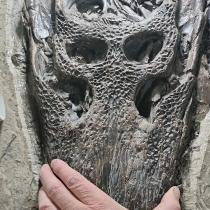
instonefossils
@instonefossils
País / Región:America
Categoría:
Vida profesional
-
73296Clasificación global
-
17248Clasificación de país / región
-
769.63KSeguidores
-
3.45KVideos
-
13.64MGustos
-
Nuevos vídeos41
-
Nuevos seguidores892
-
Nuevas vistas665.96K
-
Me gusta nuevos13.57K
-
Reseñas nuevas454
-
Compartir nuevo333
instonefossils Tendencia de datos (30 dias)
instonefossils Análisis estadístico (30 dias)
-
Vistas promedio 665.96K Seguidores / Puntos de vista 0.13% -
Me gusta promedio 284 Gustos / Puntos de vista 6.99% -
Reseñas promedio 9 Reseñas / Puntos de vista 0.07% -
Participación promedio 7 Cuota / Puntos de vista 0.05%
instonefossils Videos calientes
Únase a nuestro grupo de Facebook TikTok Inspiration
¡Compartiremos los últimos videos creativos y podrá discutir cualquier pregunta que tenga con todos!
TiktokSpy from IXSPY
Herramientas digitales para influencers, agencias, anunciantes y marcas.
Compañía de terceros independiente, no el sitio web oficial de TikTok.
Copyright@2021 ixspy.com. All Rights Reserved

 Anti-detect Browser
Anti-detect Browser

